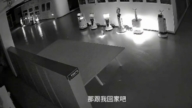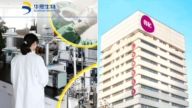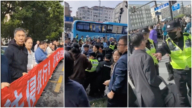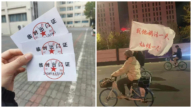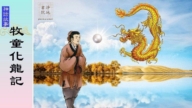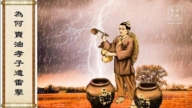【新唐人2011年10月6日讯】2004年,中国决定引进高铁技术时,中国列车运行的最高时速约为160公里,七年之后,中国将高铁的最高运营速度提升到了每小时380公里,并打算将这一速度在京沪高铁上实践。然而,近期高铁、地铁事故频发,导致中国现在超过80%的在建铁路项目已经全线“缓建”。专家认为,中国高铁事故不断,表面看是技术因素,背后是制度问题。
2009年9月8号,原铁道部副总工程师张曙光宣布:“我们用六年的时间完全掌握了高铁技术的九大核心技术,实现了全面创新的目标。”
然而,今年七月两列动车在东部城市温州发生追尾,中共当局声称40人遇难,近200人受伤。
列车事故导致了对中国高铁的怀疑:中国真的像媒体宣称的“5年走完国际上40年高速铁路发展历程”,“集世界最先进的4种技术,中国人创造出独一无二的中国高铁品牌”吗?
前大陆地铁工程师詹先生指出,从2004年开始引进动车组的技术,到08年首列“自主智慧财产权”的高速列车的诞生,实际上核心技术并没有掌握,都是国外专家到工厂去调试。所以,包括列车、信号系统,自动控制系统,核心部件都是采用国外的。特别在列车控制方面,调度系统完全没掌握,所以频出问题。
詹先生:“核心部件,像自动系统,和转向架上等关键的部件,和车上专用的电气零部件,实际上完全是进口的。然后只是在国内进行组装,然后进行调试。”
詹先生揭示真实的中国高铁发展之路。他说,2004年以前,中国搞了五次列车大提速,发现自主研发的技术满足不了需求,危及机车行车安全的事故频繁,后来停止了这些项目。以后采用技术合作的方式,或 “引进、吸收、国产化”方式发展。
詹先生:“在中国现有的铁路工业的基础上,想搞准高速160公里最终失败了,没有搞成。可是,到了2004年,通过3年的引进,就说完全掌握了高速列车的技术,基本上是不可能的。”
詹先生认为,中国领导需要政绩,没有耐心等待很长的研发周期,所以,没有技术积累。另外,49年后中国长期闭关锁国,造成技术基础差,加上现在搞研发的精力不是搞科研而是搞项目,导致目前状况。
像今年七月温州发生追尾事故,事故调查组承诺9月公开事故调查报告原因,直到现在也没有公布。而最近,上海又发生两车相撞的地铁安全事故,官方也没能给出满意的解释。
中南大学城市轨道交通研究所退休教授王成立表示,中国不讲科学,又不讲民主,是技术出现问题的主要因素。根本上还是体制问题。国内很多真相不能报导,许多记者采访了也发表不了。
王成立:“动车也好、高铁也好,都是国外学来的,有什么难的,难可以请外国人鉴定。上次那个温州动车事故,日本都表态它愿意参与事故调查。中国调查不清,请日本人来调查嘛。”
北京知名律师莫少平表示,国外一向批评中国对智慧财产权,也就是商标、专利和版权保护不力,盗版泛滥。莫少平认为,没有宗教信仰,导致伦理的道德底线不断降低,只要能赚钱什么底线都可以突破,加上地方政府的放纵,造成目前状况。
新唐人记者梁欣、宋风、柏妮采访报导。
**********************
How Much of the Chinese Bullet Train Is “Made in China"?
When China decided to adapt high-speed bullet train technology in 2004, the highest train speed it could reach was 160 km/h (99.41 mph). In seven years, the bullet train reached its maximum running speed of 380km/h (236.12 mph. It is planned to reach this speed along the Beijing-Shanghai route. However, due to frequent bullet train and subway system accidents, 80% of China’s railway projects are proceeding at a slower pace. Experts say that these accidents seem to occur due to technical reasons, but they’re actually due to policy issues.
On September 8, 2009, former vice engineer of the Ministry of Railway, Zhang Shuguang, said, “In the past 6 years, we have completely adapted the nine-core technologies of bullet trains, and have reached complete success with this type of innovation."
However, the Wenzhou bullet train accident occurred in July of this year, killing 40 and injuring 200, according to official reports.
The train accident raised serious questions about Chinese bullet trains, two of them being: “Did China really obtain in five years what the rest of the world spent 40 years trying to obtain with regards to bullet train technology?” and “Did the Chinese really create the one and only bullet train which was later to become one of the four most advanced technologies in the world?"
Former Chinese subway engineer, Mr. Zhan pointed out that since China first imported its bullet train technology in 2004, giving birth to the first “independent intellectual property rights" of high-speed trains, the basic core skill of the technology was never fully adapted, as it was always foreign experts who would go to the factory to make adjustments. However, the body of the train, the signal system, the automatic control system, and core parts, were all foreign made. Chinese engineers were also not versed in the operation of the control coordination system, causing frequent difficulties.
Mr. Zhan: “Core parts such as the automation system and important parts of Steering system as well as components in the electric system, were actually all imported. Things are just being fabricated in the mainland and later calibrated."
Mr. Zhan revealed the real behind-the-scenes details of China’ bullet train development. He said that before 2004, China tried five times to increase train speed, then realized that self-developed technology cannot meet the requirement, resulting in frequent accidents which endangered the safety of motorcycle traffic. Therefore, these projects were terminated. After that, technical cooperation was deemed most important, moving towards “import, absorption, and localization.”
Mr. Zhan: “Based on the current Chinese railway system, increasing speeds to 160km/h (99.41 mph) ultimately failed. However, over the three-year period following 2004, claims were made suggesting that high-speed train technology had been fully grasped. That is impossible!”
Mr. Zhan believes that Chinese leaders seek achievements to show off their political worth. They have no patience to wait for long R&D cycles to mature, therefore, technical knowledge doesn’t accrue. On top of that, China was closed off to the world after 1949, resulting in poor technology fundamentals, plus, effort was not spent on R&D, but rather on the project itself.
An accident investigation unit is planning to release an investigative report in September 2011 regarding the July Wenzhou bullet train accident, but no firm date has been set. Also, officials are not giving satisfactory explanations about the two subway crashes in Shanghai.
I JUST FINISHED POLISHING THE BELOW PART.
Upon learning that the Governor of Calif. was coming to visit,
Wang Licheng, a retired professor of the Urban Rail Transportation Department of the Institute of Central South University said, “There is no science in China and people have no rights. This is the main reason behind these ongoing technical problems. It’s really an institutional issue. Truth cannot be reported in China and many reports are never published.”
Wang Licheng: “Train and subway technologies were all learned from foreigners. When we run across something difficult to handle, we can invite foreigners to investigate. Regarding the Wenzhou bullet train accident, Japan said it is willing to participate in the investigation, if the Chinese cannot find the cause of the accident. So why not just let the Japanese do it?”
Renowned Beijing lawyer, Mo Shaoping said, “China has been criticized abroad for not properly protecting foreign intellectual property rights such as trademarks, patents, and copyrights.” He believes that since Chinese have been reared on an atheistic belief system, the ethical and moral bottom line continues to plummet. As long as there’s financial gain, there is no bottom line. He said that loose government controls also play a role, making things the way they are, right now.
NTD reporters Liang Xin, Song Feng and Bo Ni




